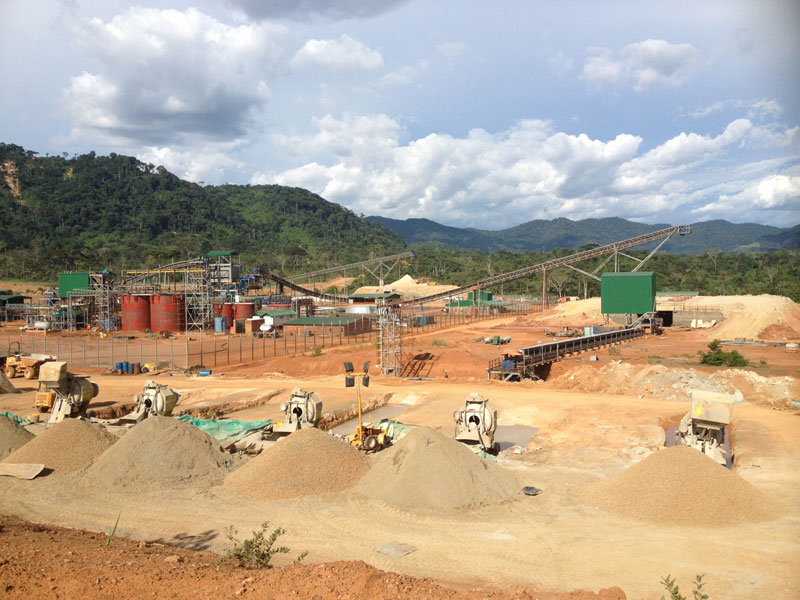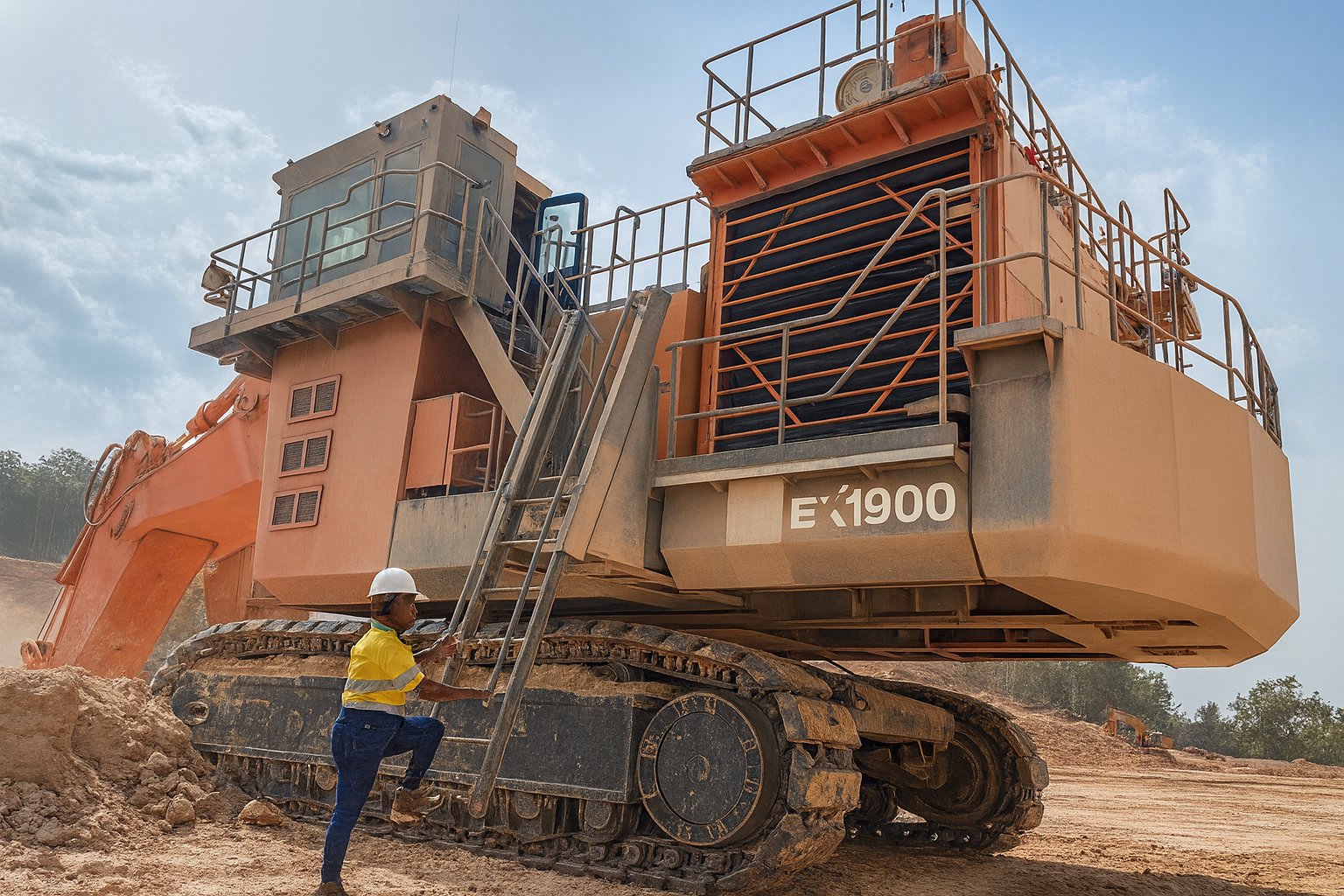
Political uncertainty and the serious lack of infrastructure development have gone hand in hand to hold back the development of mineral resources in the DRC. We frequently cover gold mining projects in both West and East Africa that have been in development since the mid 1980s, however though it's among the richest natural resource countries in Africa, the DRC seems to have lagged badly.
At last the picture is beginning to change. Since the election of Joseph Kabila in 2006, and following the introduction with the support of the World Bank of a new mining code in 2003, the country has experienced a revival of interest on the part of both major and junior international mining and exploration companies. Meanwhile, the World Bank, the IMF, USAID, and the 'Paris Club' of major global economies, as well as the European Union and South Africa, have committed billions of dollars to social and economic recovery in the DRC.
Nevertheless, the DRC continues to raise concerns among global investors who remain to be convinced their money will be safe there. However that has never been the view of the management of Banro, a Canadian gold company that started intensive mineral exploration in the DRC in 1996, starting out with a handful of experienced geologists from Ghana, Tanzania, and the UK assisted by a group of new graduates from the Bukavu Technical Institute. Within a few years, they had delineated over eleven million ounces of gold and identified 16 new targets for follow-up in the DRC's eastern provinces of South Kivu and Maniema – surely one of the most successful exploration programs in recent African history. In a short period of time, Banro has become an integral part of the emerging story of Congolese economic development, and an important partner in the social fabric of the country.
The story started in 1996 when Banro acquired control of the Twangiza property, and during the following year, undertook a $9 million exploration program which included 10,490 line-kilometres of airborne geophysics, 1,613 samples from 16 adits, and 8,577 drill core samples from 9,122 metres of core drilling along 800 metres of strike. This represented less than 20 percent of this identified mineralised trend on the 210 kilometre long Twangiza-Namoya gold belt in the South Kivu and Maniema provinces of the DRC. To date Banro has identified 10.18 million ounces of Measured and Indicated resources, plus Inferred resources of 7.01 million ounces along this highly-prospective gold belt.
Twangiza, the most advance of Banro's four properties, became Banro's first producing open pit gold mine when it entered production in October 2011, commencing commercial production in September 2012. With mill throughput at full capacity of 1.7 million tonnes per year, Twangiza was projected to produce upwards of 10,000 ounces of gold each month with an expected mine life of seven to eight years from currently-defined reserves. It is still working towards that level, having produced 22,858 ounces of gold in the fourth quarter of 2013, approximately ten percent higher than in the previous quarter last year. In all Twangiza produced 82,591 ounces of gold for the full year 2013. Banro's President and CEO Dr John Clarke expressed his satisfaction with this result: "We are pleased with the progress made at Twangiza during the last half of 2013 and look forward to both increased throughputs and recoveries in 2014 following the enhancement project completion in Q1 of this year."
At this time it is a distinct advantage for any junior company to have even one producing and highly prospective property on its books. But now Banro has another. Its Namoya mine, at the southern end of the Twangiza-Namoya gold belt in Maniema province and approximately 225 metres south west of Bukavu, successfully began gold production with the pouring of the first 320 ounces on December 30, making it Banro's second gold mine to come into production in just over two years. Construction began at Namoya in the fourth quarter of 2012. Remaining building work will continue in step with commissioning operations in the first quarter of this year, while commercial production is expected to be achieved before the end of June 2014. At full capacity, gold from the Namoya mine is expected to double the company's projected gold production to a rate of between 225,000 and 240,000 ounces a year.
This is a significant and exciting milestone for Banro, said John Clarke. "We would like to thank our professional operations teams, business partners, consultants, regional governments and the local communities for assisting us in this significant achievement. We look forward to continued growth, new business opportunities and a long association with the DRC". The start of production at Namoya is also a tremendous achievement for the DRC, clearly signifying that the emerging mining nation is a place to find, finance and successfully build new gold mines.
In addition to Twangiza and Namoya, Banro has two other key licensed projects, Lugushwa and Kamituga, and more than a dozen exploration targets including Ntula, Mufwa, Tshondo, Luhwindja and Kaziba. At Lugushwa a Measured & Indicated mineral resource of 1.13 million ounces of gold has been delineated, and an Inferred mineral resource of 4.48 million ounces of gold in close-to surface material, where the focus is on oxide resources. Exploration is continuing, with the objective of increasing the oxide resource and further plans include undertaking a scoping study. High level analysis of the Kamituga gold project was completed in 2009 and exploration drilling continued into 2012 to increase the confidence of the existing inferred mineral resource for this property to 0.92 million ounces of gold in the Measured & Indicated category.
Banro does not subscribe to the view that the Congo is an intransigent place to do business. “We have quite a different view of working in this country, where we have found people eager to leave the troubled past behind and build a future characterised by economic opportunity, social development and political stability,” says Martin Jones, Chairman of the award-winning Banro Foundation, which has been formally recognised in the DRC and Canada for its contributions to social and economic reconstruction in the DRC. One of the biggest challenges the company faced was to prove to the DRC government that it was committed to promoting social and economic development and to ensuring that mineral development significantly benefited local communities. After more than a decade of work, five key lessons have been learnt, he says.
1. Ongoing consultation and dialogue at all levels of society is absolutely critical to success in the DRC.
2. Along with consultation comes the obligation to listen with great sensitivity and to follow through fully on commitments.
3. Mining companies wishing to work in the DRC must have a strategic and comprehensive commitment to community development.
4. Transparency is critical.
5. Job creation and on-the-job training must be No1 commitments.
Under each of these heads the company has honoured its commitment in concrete terms – detailed in the Banro Foundation's brochure, which can be seen at www.banro.com/i/pdf/BanroFoundationBrochure_EN.pdf#zoom=100. It is well worth reading.
Written by John O’Hanlon, research by Richard Halfhide
DOWNLOAD
 Banro-Africa-Mining-Apr14-Bro-s.pdf
Banro-Africa-Mining-Apr14-Bro-s.pdf












